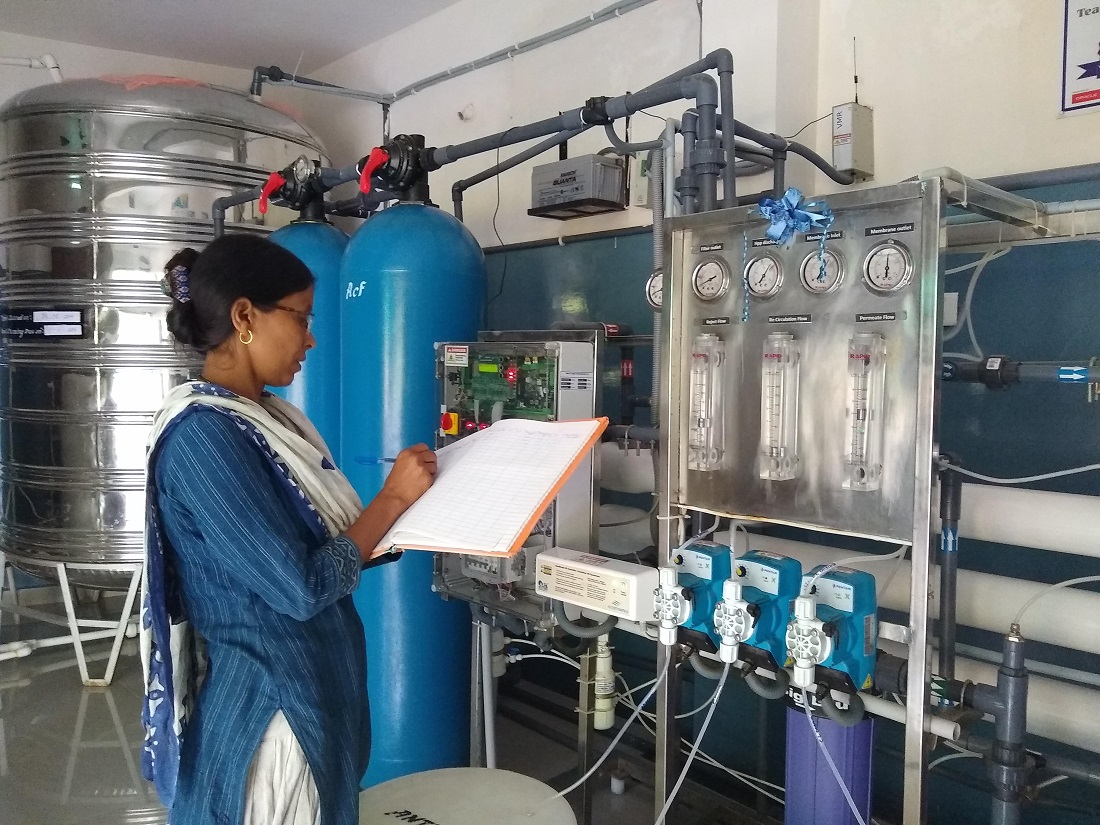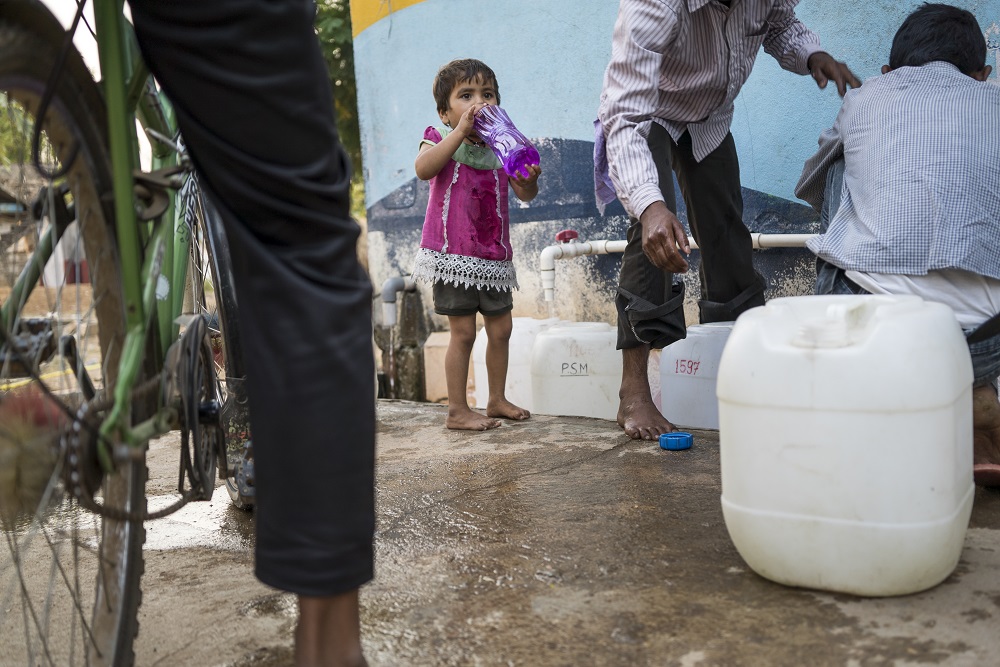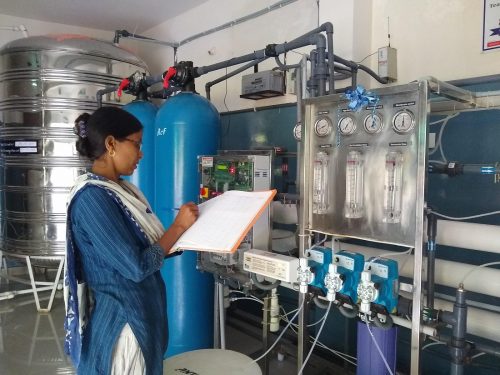
An Indian American sophomore’s unique way of connecting to her heritage.
By Simran Rajpal

As an Indian American growing up halfway around the world from where my parents call home, I find myself constantly searching for ways to stay connected with my heritage. When I was little, that meant learning to make chai and spending six hours in Bharatanatyam rehearsals every Sunday morning. But as I’ve grown up and begun cultivating my interests in gender equity and public health as a student at the University of Pennsylvania, staying connected to my roots looks a little different.
This summer, through the Water Center at the University of Pennsylvania, I’m interning for Safe Water Network, a nonprofit working to promote access to safe water in India and Ghana. As an intern, I’m working on understanding water access in India through the lens of gender equity–a role that feels like a perfect combination of my heritage and my passions.
In my first few weeks, I’ve been able to look back on some of my own experiences in India and reflect on how many of those experiences were shaped by not having universal access to safe water while traveling.
In one memory in particular, I’ve been reflecting on the water in my Nani’s, or grandmother’s, house. Every morning, she boiled the day’s drinking water and stored it in a clay pot in the corner of her kitchen to be scooped out into steel cups with a large ladle.
READ: Why clean water matters to young girls? (September 10, 2019)
Trips to India are always filled with idiosyncrasies like this: only drink water from the clay pot, only eat the hot street food, and definitely only drink bottled mineral water when travelling out of the house. Since her house is connected to Mumbai’s city water system, Nani has nothing to worry about when it comes to which water I drink – and her insistence on boiling water is probably more out of habit than worry over illness from contamination. But not every household in India has that luxury.
Only a kilometer away from Nani’s house, people line up every morning to get the day’s water from a water distribution station. In a country where less than 50 per cent of the population in India has access to safely managed drinking water and 100,000 people die each year from diarrhea, the tap nearest my grandmother’s house could contain microbial contaminants.
When I first learned about these water ATMs, I couldn’t fathom the idea that clean water was not a universal guarantee. But, in households that do not have access to drinking water on-premises, 80 percent of the water is collected by women. And, aside from collection responsibilities, women typically pick up the burden of water related obligations: water purification, domestic chores, and treating family members who fall ill with water-related diseases.

This reality hits close to home for me. The maid who helps my grandmother wakes up early every morning to collect the day’s water for her family before coming into work because the water in her neighborhood is only available between 6 am and 8 am Although her water comes in mobile tankers rather than groundwater pumps, she is still uncertain about the purity of the water that she and her family drinks.
For so many women like the maid who helps my grandmother, the lack of convenient access to affordable, safe drinking water affects their ability to participate in economic, social, and political activities – effectively locking them into a sustained cycle of poverty. In 2018, women in India made up only 26% of the workforce. Empowering women through sustainable water enterprises – making water more accessible and creating workplaces for women entrepreneurs – is incredibly important to alleviating this burden.
READ: Safe Water Network calls for collaborative effort to tackle water problem (October 27, 2018)
Part of what attracted me to Safe Water Network was their commitment to empowering women through their work. In high school, I spent hours with women leading some of the foremost nonprofits in my hometown, all working to better the lives of women and children. Whether it was providing access to reproductive healthcare, or a shelter away from domestic violence, I saw firsthand how impactful empowering women to take control of their safety, education, and healthcare benefited entire communities. The same principle is in effect at Safe Water Network’s “iJal Safe Water Stations in India,” where women are trained to operate and manage community water treatment plants.
These women, affectionately known as “Water Aunties” in their communities, are changing lives every day because the burden of water collection has been eased. Ramadevi in Gollapadu, one of India’s most socially and economically disadvantaged villages, developed an initiative dedicated to protecting pregnant and nursing mothers from the effects of unsafe water after an iJal Safe Water Station was installed in her community.
I’m excited to learn more about Safe Water Network’s efforts to impact policy at a national level in India. Through the engagement of local and national governments, financial institutions, development agencies, and social enterprises, many more Water Aunties can be empowered to create their own futures and work as agents of change in their own communities.
My grandmother grew up in a world where safe and clean water was not a universal guarantee. The shadows of that follow her to this day – boiling water every morning, always reminding us to only drink bottled water, and even maintaining her own house connected to city water. But now, under the Jal Jeevan Mission of the Government of India, $90B has been committed to provide safe piped water to all homes by 2024 – a large step forward towards equity in water access.
(Simran Rajpal is a sophomore at the University of Pennsylvania studying Public Health & Computational Biology. As a student, Simran is incredibly passionate about improving access to resources and promoting health and gender equity.)



